![]()
![]()
![]()
Use LEFT and RIGHT arrow keys to navigate between flashcards;
Use UP and DOWN arrow keys to flip the card;
H to show hint;
A reads text to speech;
25 Cards in this Set
- Front
- Back
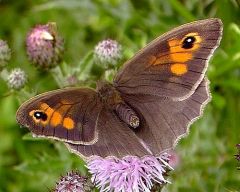
|
Meadow brown -This extremely common species has many variations. The undersides of both sexes are similar with orange forewings and brown hindwings, but females have more clearly defined light and dark regions. Wingspan 40-55 mm |
|
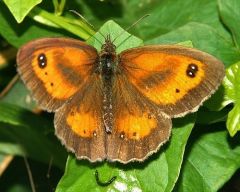
|
The Gatekeeper butterfly has orange-brown wings. Near the edge of the forewing is a black spot containing 2 white pupils. The underside of the hindwing has white-centered spots. Wingspan 40-47mm
|
|
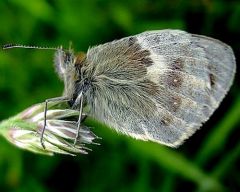
|
Small Heath.The Small Heath is an inconspicuous butterfly that flies only in sunshine and rarely settles more than a metre above the ground. Its wings are always kept closed when at rest. Wingspan 33-40mm
|
|
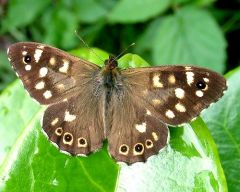
|
Speckled Wood. Often feed from bramble blossoms. 40-45 mm
|
|
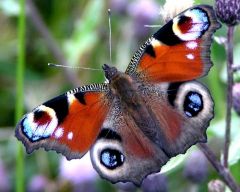
|
Peacock. The patterning on this exquisite butterfly is unique. In contrast to the striking upperside the underside is dark brown with purplish black lines, providing good camouflage. Wingspan 55-60 mm
|
|

|
Small Tortoise Shell. One of the most common butterflies from spring to autumn. 45-50 mm
|
|
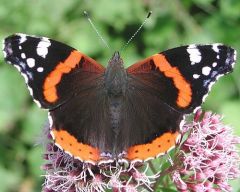
|
Red Admiral. Well known strong flying butterfly, wingspan 55-60 mm
|
|
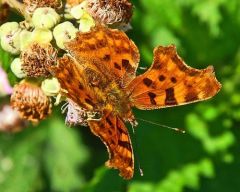
|
Comma. This is a variable butterfly: the first generation is lighter and more brightly coloured than the second. Wingspan 45-60 mm
|
|
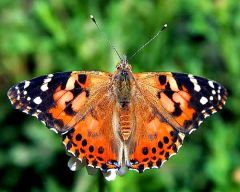
|
Painted Lady. Very distinctive and easy to recognise. Wingspan 50-60 mm
|
|
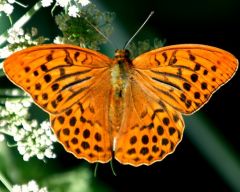
|
Silver Washed Fritillary. The swooping flight of this large and graceful butterfly is one of the most beautiful sights to be found in woodland during high summer.
|
|

|
Large White. Females can be recognised by the presence of two black spots and a black streak on the forewing. The undersides of the hindwings of both sexes are bright yellow with a slight black scaling. Wingspan 55-70 mm
|
|
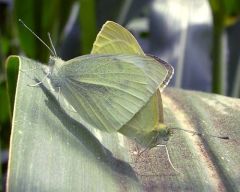
|
Small White. Females are more yewllow in colour with two black spots on the forewing. Wingspan 45-55 mm
|
|
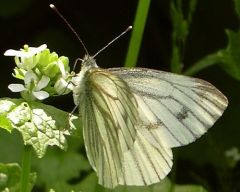
|
The Green-veined White butterfly is a white butterfly of similar size to the Small White but has prominently outlined veins. Males have a black tip to the forewing, a black spot on the upperside of the forewing and a black spot on the top edge of the hindwing. Females have additional black spot & dash on upperside of forewing. Wingspan 50mm.
|
|
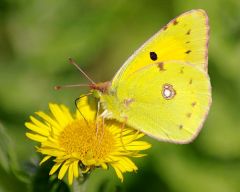
|
The Clouded Yellow butterfly is a migrant species. If the winds are favourable, then we may get more of these butterflies than usual in a particular year. Wingspan 57-62 mm
|
|
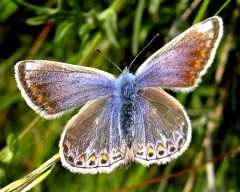
|
The Common Blue is the most widespread blue butterfly in Britain and Ireland and is found in a variety of grassy habitats. The brightly coloured males are conspicuous but females are more secretive. The colour of the upperwings of females varies from almost completely brown in southern England to predominantly blue in western Ireland and Scotland, but the colour is variable within local populations with some striking examples. Wingspan 25-40 mm
|
|
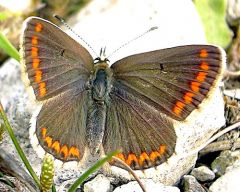
|
Brown Argus. Both sexes are brown with marginal, orange-red lunules. Females are larger with bigger spots. Wingspan 20-30 mm
|
|
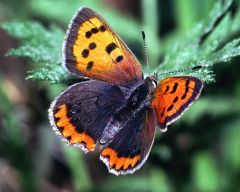
|
Small Copper. Common species 25-30 mm
|
|
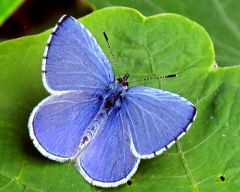
|
Holly Blue. Males are pale lilac-blue with narrow, black borders, whlie females have broad, blackish brown borders. Wingspan 20-30 mm
|
|
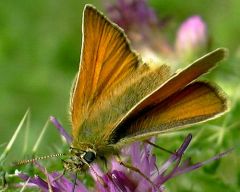
|
The Small Skipper is a butterfly of rough grassland, field margins, hedgerows, woodland margins, rides and glades. The Essex Skipper butterfly is almost identical to the Small Skipper. The difference between the Small Skipper and the Essex Skipper butterfly is determined by the color of the underside of the tip of the antennae. Small Skipper: undersides of clubs of antennae are reddish-orange. Essex Skipper: undersides of clubs of antennae are black. Wingspan 30mm
|
|
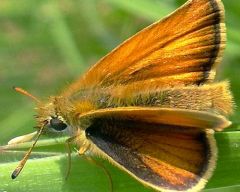
|
Essex Skipper. The difference between the Small Skipper and the Essex Skipper butterfly is determined by the color of the underside of the tip of the antennae. Small Skipper: undersides of clubs of antennae are reddish-orange. Essex Skipper: undersides of clubs of antennae are black.
|
|
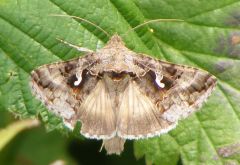
|
silver y moth |
|

|
Marbled White. Although quite variable in pattern, this is a very distinctive black and white butterfly. In some forms the ground clour is strong yellow. The sexes are alike although females tend to be larger and paler. Wingspan 45-55 mm
|
|
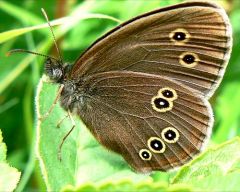
|
The ringlet. Males are blackish on the upperside, with a variable number of indistinct eyespots, while the females are larger and paler. Wingspan 40-45 mm
|
|

|
The large skipper is easily distinguished from other species by its large size and lack of strong patterning on its wings, 25-30mm
|
|
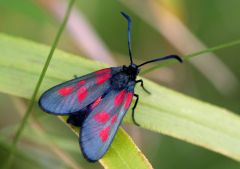
|
Burnet moth |

